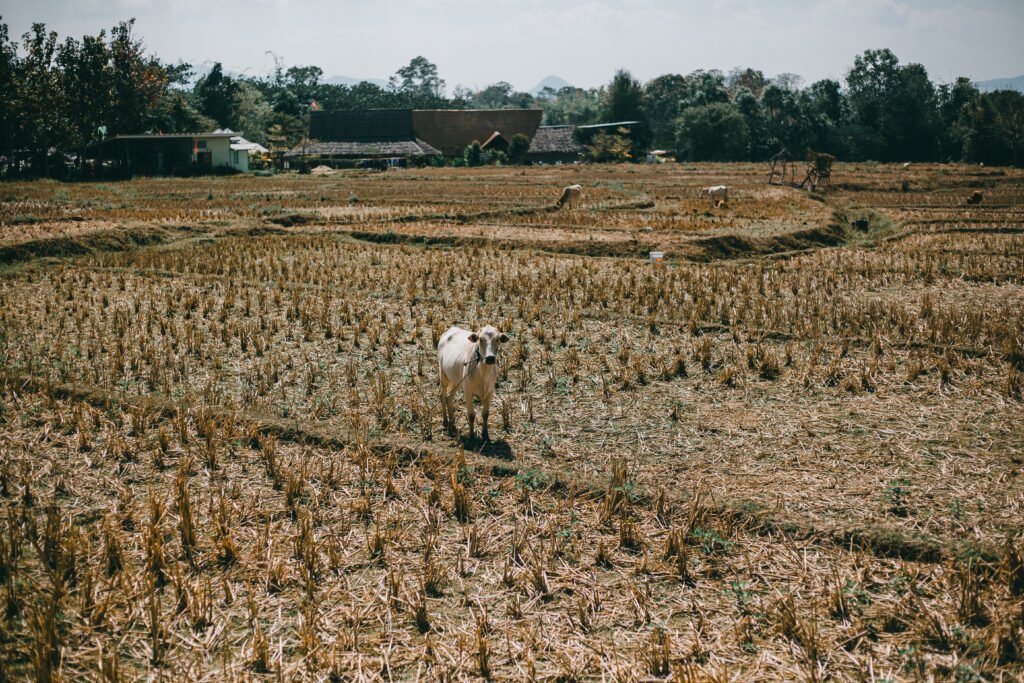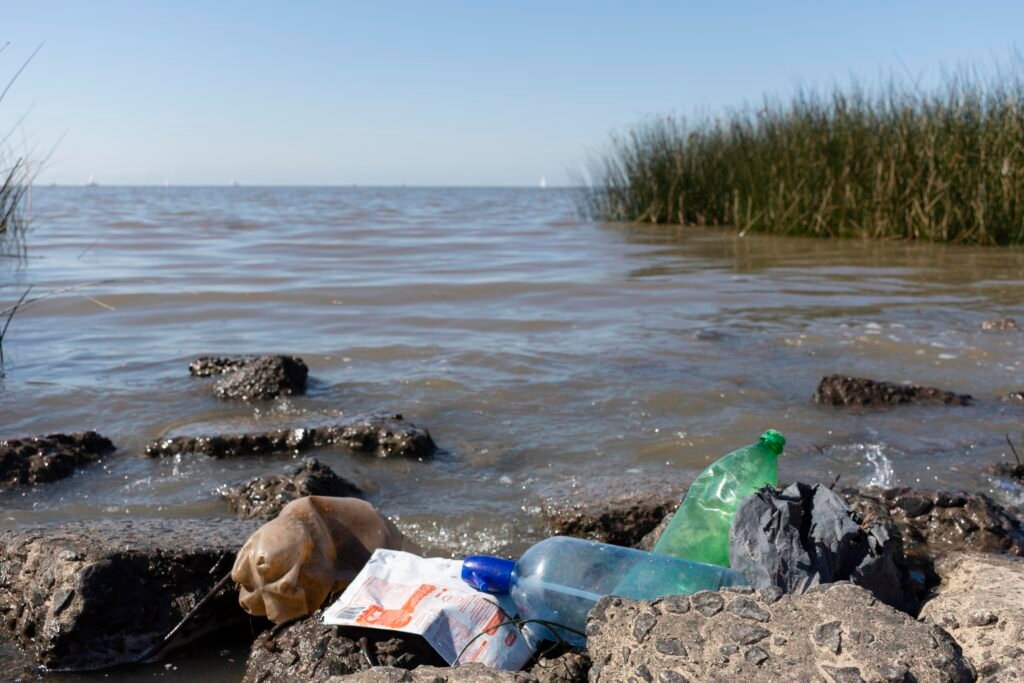World Water Day is an annual global initiative supported by the United Nations since 1993, falling on March 22 each year. This year marks the 31st World Water Day, themed “Water For Peace.” The flagship United Nations ‘World Water Development Report’ for this year was developed under the World Water Assessment Programme, led by UNESCO.
Access to clean water remains a persistent challenge for approximately two billion people worldwide, exacerbated by a rising demand for freshwater. The global demand for freshwater is increasing at a rate of one percent per year, primarily driven by the agricultural sector, which accounts for 70% of freshwater use globally, followed by the industrial sector at 20%.

Table of Contents
Understanding Water Stress: Global Trends and Challenges
Water stress refers to a condition where the water demand exceeds the available supply or when water quality is compromised, leading to challenges in meeting human and environmental needs. This situation can arise due to various factors such as population growth, climate change, pollution, inefficient water management practices, and over-exploitation of water resources. Water stress can severely affect ecosystems, agriculture, industries, and human health, highlighting the importance of sustainable water management and conservation efforts to mitigate its impacts.
Reason For Water Stress
Unsustainable Agricultural Practices – In recent years, the world has witnessed a significant rise in concern over the impact of unsustainable agricultural practices on the environment. From deforestation to soil degradation, these practices have far-reaching consequences that affect not only the ecosystem but also human health and food security.
Unsustainable agricultural practices contribute to water scarcity and pollution. Excessive irrigation, coupled with poor water management practices, leads to the depletion of freshwater resources. Furthermore, runoff from agricultural fields, containing sediment, nutrients, and pesticides, pollutes water bodies, posing risks to aquatic ecosystems and human health.
The scarcity of water not only affects agricultural productivity but also creates conflicts over water usage in regions facing water stress. Sustainable water management practices, such as drip irrigation and water recycling, are essential to mitigate these challenges and ensure equitable access to water resources.
Deforestation and Its Ramifications – One of the most pressing issues associated with unsustainable agriculture is deforestation. Deforestation refers to the clearing of forests or trees to make way for agricultural activities such as crop cultivation or livestock grazing. This practice not only leads to the loss of valuable forest ecosystems but also contributes to greenhouse gas emissions, primarily through the release of stored carbon dioxide.

The ramifications of deforestation are manifold. First and foremost, it leads to the loss of biodiversity as many plant and animal species rely on forest habitats for survival. Deforestation also disrupts crucial ecosystem services such as water cycle regulation and soil nutrient retention, leading to issues like erosion and reduced water quality.
Industrialization and Urbanization – In the wake of rapid industrialization and urbanization, concerns about water quality and pollution have become increasingly prominent. The nexus between industrial growth, urban expansion, and environmental sustainability is a complex web that demands careful examination. As industries thrive and cities expand, the demand for resources such as water escalates significantly. This heightened demand, coupled with various anthropogenic activities, has profound implications for water quality and pollution levels.
Industries often discharge pollutants such as heavy metals, chemicals, and organic compounds into water bodies. These pollutants can degrade water quality, posing serious threats to aquatic ecosystems and human health. Urban areas generate runoff from impermeable surfaces like roads and rooftops. This runoff carries pollutants like oil, debris, and nutrients into waterways, contributing to water pollution. The increase in industrial and domestic wastewater overwhelms treatment systems, leading to inadequate purification and potential contamination of water sources.
Excessive nutrient runoff from urban and industrial areas can cause eutrophication, leading to algal blooms, oxygen depletion, and harm to aquatic life. Industrial effluents containing toxic substances pose a direct threat to aquatic organisms, disrupting ecosystems and endangering biodiversity. Poor water quality due to pollution increases the risk of waterborne diseases, affecting human populations dependent on contaminated water sources.
The Link Between Climate Change and Water Pollution
Climate change, primarily driven by human activities such as burning fossil fuels and deforestation, has triggered a cascade of environmental changes, including alterations in precipitation patterns, rising global temperatures, and increased frequency of extreme weather events. These shifts have profound implications for water bodies, leading to heightened levels of water pollution through various mechanisms.

Temperature changes can influence the growth of algae and cyanobacteria, leading to harmful algal blooms (HABs). These blooms not only deplete oxygen levels in water but also release toxins that are harmful to aquatic life and human health. Climate change disrupts traditional hydrological cycles, causing fluctuations in water availability and distribution. This can result in both water scarcity and water surplus in different regions, further exacerbating water pollution issues. Droughts, for instance, concentrate pollutants in water bodies due to reduced dilution, while heavy rainfall events can wash pollutants from land into rivers and lakes.
Rising sea levels, attributed to climate change, pose a threat to coastal areas by facilitating saline intrusion into freshwater sources. This intrusion not only compromises water quality but also renders freshwater unfit for consumption and agricultural use. Coastal communities face heightened risks of contamination and scarcity, amplifying the challenges of managing water pollution. Aquatic ecosystems bear the brunt of water pollution resulting from climate change. Pollutants such as nutrients, pesticides, and heavy metals disrupt the balance of ecosystems, leading to declines in biodiversity, fish kills, and habitat degradation. Species that depend on specific water conditions face extinction threats, further compromising ecosystem resilience.
Water pollution not only affects aquatic life but also poses significant risks to human health. Contaminants like pathogens, chemicals, and microplastics can enter drinking water sources, causing waterborne diseases, developmental disorders, and other health issues. Vulnerable populations, including children and elderly individuals, are particularly susceptible to the adverse effects of polluted water. The economic costs of water pollution due to climate change are substantial and multifaceted. Industries reliant on clean water, such as agriculture, fisheries, and tourism, suffer losses due to reduced productivity, increased treatment costs, and reputational damage. Moreover, communities grappling with polluted water sources face financial burdens related to healthcare, remediation efforts, and resource reallocation.
Challenges And Concerns Regarding Water Stress and Pollution
The Impact of Water Scarcity on Agriculture
Water scarcity significantly impacts agriculture at various levels, affecting crop yields, livestock health, and overall farm productivity. With less available water for irrigation, farmers face difficulties in maintaining optimal soil moisture levels, leading to reduced crop growth and lower yields. Additionally, water scarcity can contribute to soil degradation and salinization, further exacerbating the challenges faced by farmers.
Decreased Crop Yields and Quality
One of the immediate effects of water scarcity in agriculture is a decrease in crop yields and quality. Plants require an adequate supply of water to support essential physiological processes such as photosynthesis, nutrient uptake, and growth. Insufficient water availability can stunt plant growth, reduce flowering and fruiting, and lead to smaller, lower-quality harvests.
Impact on Livestock and Animal Husbandry
Water scarcity also impacts livestock farming and animal husbandry practices. Livestock require water for drinking, hygiene, and cooling in hot climates. Limited water availability can lead to dehydration among animals, affecting their health, milk production, and overall well-being. Farmers must implement water conservation measures and efficient watering systems to mitigate these challenges.
Gender Dynamics and Water Access
In many societies, women are primarily responsible for household water management, including fetching water for drinking, cooking, and cleaning. This places a disproportionate burden on women, often resulting in physical strain, limited time for other activities, and increased vulnerability to water-related illnesses. The health impacts of water stress on women are multifaceted and interconnected. Dehydration is a common issue, especially in areas where clean water sources are scarce. Prolonged dehydration can lead to various health problems, including kidney stones, urinary tract infections, and compromised immune function. Moreover, women who lack access to clean water may resort to unsafe alternatives, increasing their risk of waterborne diseases such as cholera, typhoid, and diarrhea.
Another critical aspect is menstrual hygiene management, which is closely linked to water access and sanitation. In regions where water stress is prevalent, women and girls often face challenges in maintaining adequate menstrual hygiene practices. Limited access to clean water for washing and sanitation facilities can lead to infections, stigma, and disruptions in education and work. The effects of water stress extend beyond physical health to encompass economic and social dimensions. Women in water-stressed areas may experience reduced productivity due to water-related burdens, affecting their ability to engage in income-generating activities or pursue education. Additionally, water scarcity can exacerbate existing inequalities, particularly for marginalized communities where access to resources is already limited.
Water stress can have significant effects on both industry and energy security
Industries that rely heavily on water for production processes, such as manufacturing, agriculture, and mining, can face disruptions due to water stress. Reduced water availability can lead to production delays, increased costs for sourcing alternative water supplies, and even plant closures in extreme cases. This disruption can have cascading effects on supply chains and economies reliant on these industries.
When water becomes scarce, the cost of acquiring and treating water can rise significantly. Industries may need to invest in more efficient water usage technologies or adopt alternative production methods that require less water, both of which can incur additional expenses. Higher costs can also be passed on to consumers, leading to inflationary pressures.
Water stress can pose risks to energy infrastructure, especially in regions where water is used for cooling power plants or extracting fossil fuels. For instance, droughts can lower water levels in rivers and reservoirs, affecting the operation of hydropower plants. In coastal areas, sea-level rise due to climate change can threaten power plants located near water bodies. Water stress in one region can have ripple effects on global supply chains, particularly for industries with interconnected networks of production and distribution. Disruptions in water availability can lead to shortages of raw materials, components, and finished products, impacting businesses worldwide.
Water Conservation And a Sustainable Future
Rainwater harvesting is a sustainable practice that involves collecting rainwater from roofs and storing it for later use. Install rain barrels or tanks to capture rainwater, which can then be used for activities like watering plants or washing vehicles.
In agricultural and landscaping settings, optimizing irrigation practices can lead to substantial water savings. Using drip irrigation systems, mulch around plants to retain moisture, and water during cooler parts of the day to minimize evaporation. In agricultural and landscaping settings, optimizing irrigation practices can lead to substantial water savings. Use drip irrigation systems, and mulch around plants to retain moisture, and water during cooler parts of the day to minimize evaporation.
Greywater, which includes wastewater from sinks, showers, and laundry, can be recycled for non-potable uses. Install greywater recycling systems to treat and reuse greywater for activities like flushing toilets or watering gardens. Encourage responsible water use habits among household members or employees. Promote shorter showers, turn off taps when not in use, and only run full loads in dishwashers and washing machines to minimize water consumption.
Education plays a crucial role in promoting water conservation. Raise awareness about the importance of water conservation, provide tips on saving water, and showcase success stories of individuals or organizations that have implemented effective water-saving measures. Encourage governments and businesses to invest in water infrastructure upgrades, implement water-saving regulations, and promote sustainable water management practices.
In conclusion, water conservation is a collective responsibility that requires proactive measures at individual, community, and societal levels. By implementing the aforementioned water conservation techniques and fostering a culture of mindful water usage, we can safeguard this precious resource for future generations. Together, let’s make every drop count in our journey towards a more sustainable future.
